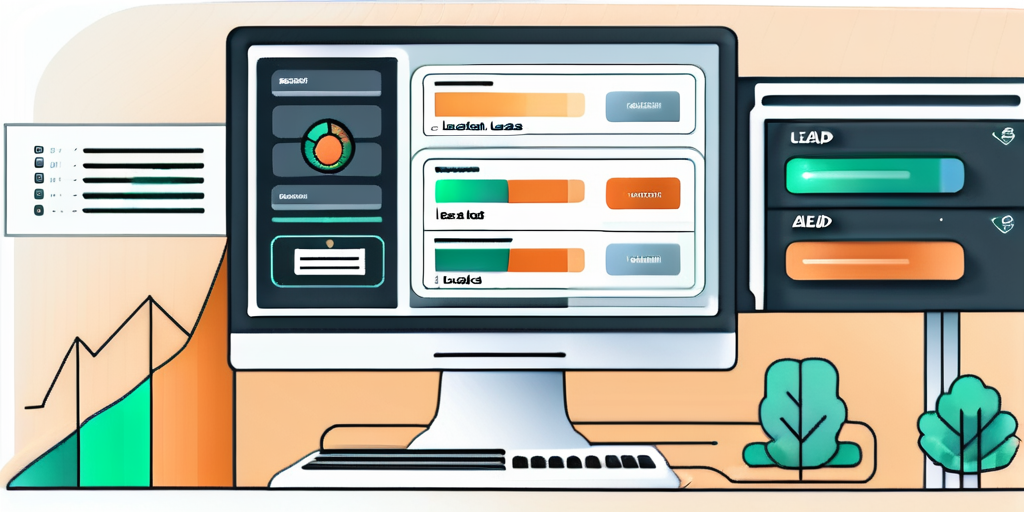In the digital marketing landscape, the term “prospect” holds significant importance. It refers to a potential customer who has shown interest in your product or service but has not yet made a purchase or committed to a transaction. This article will delve into the concept of a prospect in the context of website leads, providing a comprehensive understanding of the term and its implications for businesses.
Understanding the concept of a prospect is crucial for businesses, especially in the digital marketing sphere. It allows businesses to identify potential customers, nurture them through the sales funnel, and ultimately convert them into paying customers. This article will explore the various aspects of prospects, including their identification, qualification, nurturing, and conversion.
Identifying Prospects
Identifying prospects is the first step in the lead generation process. It involves recognizing individuals or businesses that have shown interest in your product or service. This could be through various actions such as visiting your website, signing up for a newsletter, or engaging with your content on social media.

There are several strategies businesses can employ to identify prospects. These include tracking website analytics to understand visitor behavior, using lead generation tools to capture contact information, and monitoring social media engagement to identify interested individuals.
Website Analytics
Website analytics are a powerful tool for identifying prospects. They provide insights into visitor behavior on your website, including the pages they visit, the time they spend on each page, and the actions they take. By analyzing this data, businesses can identify potential prospects based on their engagement with the website.
For example, a visitor who spends a significant amount of time on your product page and downloads a product brochure could be considered a prospect. Similarly, a visitor who regularly reads your blog posts and shares them on social media could also be a potential prospect.
Lead Generation Tools
Lead generation tools are software solutions that help businesses capture contact information from website visitors. These tools typically include features like pop-up forms, landing pages, and email marketing integrations. By using these tools, businesses can collect contact information from interested visitors, turning them into prospects.
For instance, a visitor who fills out a contact form on your website to request more information about your product is a prospect. Similarly, a visitor who signs up for your newsletter to stay updated with your latest news and offers is also a potential prospect.
Qualifying Prospects
Once prospects have been identified, the next step is to qualify them. Qualification involves assessing the likelihood of a prospect becoming a customer based on various factors such as their need for your product or service, their ability to purchase, and their readiness to buy.

There are several methods businesses can use to qualify prospects. These include the BANT (Budget, Authority, Need, Timeframe) framework, the CHAMP (Challenges, Authority, Money, Prioritization) methodology, and the GPCT (Goals, Plans, Challenges, Timeline) model.
BANT Framework
The BANT framework is a popular method for qualifying prospects. It involves assessing a prospect’s Budget (whether they can afford your product or service), Authority (whether they have the decision-making power to make a purchase), Need (whether they have a need for your product or service), and Timeframe (when they plan to make a purchase).
By using the BANT framework, businesses can prioritize their prospects based on their likelihood of becoming customers. This allows them to focus their resources on the most promising prospects, increasing their chances of conversion.
CHAMP Methodology
The CHAMP methodology is another approach to qualifying prospects. It involves identifying the Challenges a prospect is facing, assessing their Authority to make a purchase, understanding their Money situation (similar to the Budget in BANT), and determining their Prioritization (how important solving their challenge is to them).
By using the CHAMP methodology, businesses can gain a deeper understanding of their prospects’ needs and motivations. This allows them to tailor their marketing and sales efforts to address these needs, increasing their chances of converting prospects into customers.
Nurturing Prospects
After prospects have been identified and qualified, the next step is to nurture them. Nurturing involves building a relationship with your prospects, providing them with valuable content and information, and guiding them through the buying process.

There are several strategies businesses can use to nurture prospects. These include content marketing, email marketing, and social media engagement.
Content Marketing
Content marketing is a powerful tool for nurturing prospects. It involves creating and sharing valuable content that educates, informs, and engages your prospects. This could include blog posts, white papers, webinars, and videos.
By providing valuable content, businesses can position themselves as thought leaders in their industry, build trust with their prospects, and guide them through the buying process. This increases the likelihood of prospects becoming customers.
Email Marketing
Email marketing is another effective strategy for nurturing prospects. It involves sending targeted emails to your prospects with personalized content and offers. This could include newsletters, product updates, and special promotions.
By using email marketing, businesses can stay top of mind with their prospects, build a relationship with them, and guide them towards making a purchase. This increases the likelihood of prospects converting into customers.
Converting Prospects
The final step in the prospect journey is conversion. This involves turning your prospects into paying customers. Conversion can be achieved through various strategies such as offering a compelling value proposition, providing excellent customer service, and using persuasive sales techniques.
Understanding the concept of a prospect and effectively managing the prospect journey can significantly enhance a business’s lead generation efforts. By identifying, qualifying, nurturing, and converting prospects, businesses can increase their customer base, boost their sales, and grow their business.
Frequently Asked Questions
What is a Prospect?
A prospect is an individual or organization that has been identified as having the potential to purchase a product or service. Unlike a general lead, a prospect has been qualified to some degree, showing not only interest but also the authority, budget, and need that indicate a higher likelihood of becoming a customer. Prospects are considered one step closer to making a purchase compared to leads in the sales funnel.
How does a Prospect differ from a Lead?
The main difference between a prospect and a lead lies in their qualification status and likelihood to buy. A lead is anyone who shows interest in a company’s products or services, often through actions like filling out a web form or subscribing to a newsletter. A prospect, however, is a lead that has been further qualified as a potential buyer based on criteria such as need, budget, authority, and timing. Essentially, all prospects are leads, but not all leads qualify as prospects.
How can businesses identify Prospects?
Businesses can identify prospects through several methods, including:
- Lead Scoring: Using a lead scoring system to assign values to leads based on their actions and demographic information, helping to highlight those most likely to purchase.
- Market Research: Conducting research to understand market needs and identifying companies or individuals who fit the target market profile.
- Engagement Tracking: Monitoring interactions with content, social media, emails, and other marketing efforts to identify leads showing strong interest or engagement.
- Direct Inquiries: Receiving direct contact from individuals or organizations inquiring about products or services can also signify prospect status.
Why are Prospects important in the sales process?
Prospects are crucial in the sales process because they represent potential customers who are more likely to convert, allowing sales teams to focus their efforts more efficiently. By prioritizing prospects, businesses can allocate their resources and time towards nurturing relationships with those who have a higher likelihood of purchasing, ultimately improving sales effectiveness and increasing the conversion rate.
What strategies can be used to convert Prospects into Customers?
To convert prospects into customers, businesses can use strategies such as:
- Personalized Communication: Tailor communications and follow-ups based on the specific interests, needs, and behaviors of the prospect.
- Demonstrations and Trials: Offer product demonstrations, free trials, or samples to provide a tangible experience of the value offered.
- Educational Content: Share relevant content that addresses the prospect’s pain points and showcases solutions.
- Consultative Selling: Adopt a consultative approach that focuses on building relationships and understanding the prospect’s business challenges to offer tailored solutions.
- Incentives: Provide timely incentives, such as discounts or exclusive offers, to encourage prospects to make a purchase decision.
Lead Qualification: Related Glossary Terms
Still unsure about Contact Button?
3 reasons to give it a try
- Start at no cost with our Basic Plan. We'll even help install your first button for free!
- Our all-in-one widget will make your website easier to use and help you capture more leads.
- All your existing website plugins, apps, and menus will still work after you install a Contact Button, so it can be easily removed if you no longer want it.
Basic Plan
Free
Good for websites with fewer than 1,000 visitors per month
- Up to 10 New Leads per Month
- Up to 100 Monthly Button Clicks
- Use Custom Google Fonts
- Hide Contact Button Branding
- Embed Your Own Affiliate Link
Max Plan
$10
Remove monthly lead & click limits and Contact Button branding
- Unlimited Monthly Leads
- Unlimited Button Clicks
- Use Custom Google Fonts
- Hide Contact Button Branding
- Embed Your Own Affiliate Link